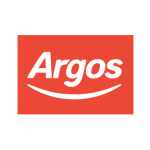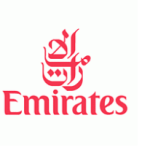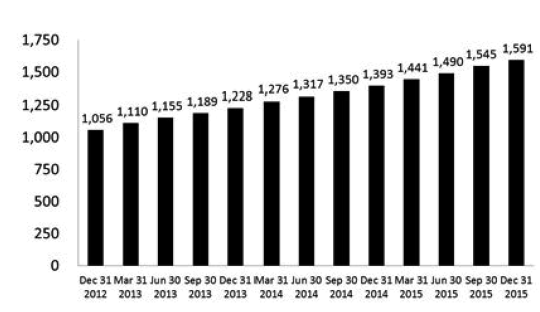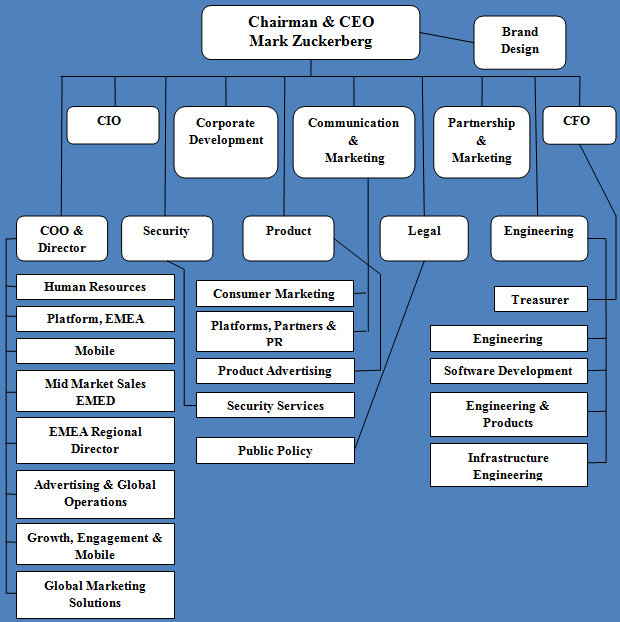
Below is Argos SWOT analysis template Strengths 1. Solid presence in the UK with more than 800 stores and about 10% market share in general merchandise retail segment 2. Ownership of a range of brand portfolio including Homebase, Elizabeth Duke, Alba, Bush, Chad Valley and others 3. Cost-effective business model pioneered by the company 4. Efficient cost-control measures in place Weaknesses 1. Brand image damaged due to a range of ethical scandals related to working on Sunday, pricing in Ireland and others 2. Overdependence on the UK market 3. An absence of clear target customer segment 4. High employee turnover due to low wages Opportunities 1. Greater utilization of online sales channel 2. Pursuing international market expansion strategy 3. Development of own-brand products 4. Finding and exploiting new sources of competitive advantage on the basis of technological innovations Threats 1. Engagement in price wars with other retail chains with negative implications on the bottom line 2. Negative implications on Brexit on the national economy 3. Decline of catalogue showroom business model 4. Decline in the quality of service due to the further pursuit of cost leadership How to use the Argos SWOT Analysis template above Expand each point above into one or more paragraphs with discussions and analysis. Additional points related to Argos strengths, weaknesses, opportunities and threats not listed above can also be included if you think they are relevant points and add value to the work. You will need to support your arguments with references from reliable sources such as annual report of the company, industry journals and magazines and government publications. Your discussions will need to include statistical data and preferably charts and graphs with references to the sources. You can also find many examples for the application of SWOT…
By John Dudovskiy
Category: Beauty & Fashion

Facebook Inc. segmentation, targeting and positioning comprises a set of activities directed at identifying specific groups among the population as potential customers (site users) and developing products and services according to the needs and wants of this specific group. Segmentation involves dividing population into groups according to certain characteristics, whereas targeting implies choosing specific groups identified as a result of segmentation to sell products to. Since its launch in 2004 as a social networking site exclusively for Harvard students, Facebook’s target customer segment has been consistently expanding. Nowadays, the social media giant targets a wide range of customers aged from 13 years old and older. Positioning refers to the selection of the marketing mix the most suitable for the target customer segment. Facebook uses multi-segment type of positioning and accordingly, it targets multiple customer segments at the same time with different social media platforms. For example, Facebook social media site targets individuals interested in a full range of social media services such as pages, news feed events etc., whereas Instagram targets customer segment who are interested exclusively on photo sharing. Facebook Inc. also uses adaptive positioning strategy across its brands, repositioning products and services according to changes in preferences of the target customer segment. The following table 2 illustrates Facebook segmentation, targeting and positioning: Type of segmentation Segmentation criteria Facebook Inc. target customer segment Facebook Messenger Instagram What’s Up Oculus Geographic Region International International International International International Density Urban & rural Urban & rural Urban & rural Urban & rural Urban Demographic Age 13 and upwards 13 and upwards 13 – 40 16 – 45 13 – 40 Gender Males & Females Males & Females Males & Females Males & Females Males & Females Life-cycle stage Bachelor Stage Newly Married Couples Full Nest I Full Nest II Full Nest…

Facebook Inc. marketing communication mix is associated with the integration of individual elements of marketing mix into the marketing strategy of the social media company. Elements of the marketing communication mix include print and media advertising, sales promotions, events and experiences, public relations, direct marketing and personal selling. Advertising Being a popular e-commerce company, Facebook Inc. also occasionally advertises itself via traditional media such as billboards and television. In the UK, the company has already invested more than GBP 6m in advertising through traditional media in 2015, compared to a meager GBP 16,000 spent by the company in the previous year.[1] Moreover, Facebook traditional media advertisements in the UK included major TV channels and The London Underground. Nevertheless, viral marketing remains to be the main advertising technique extensively utilized by Facebook. Recently, the company launched a massive ad campaign for Facebook Live, placing user videos at the core of the campaign.[2] The social media giant also runs its own advertisements on Facebook. Generally, For 2015, 2014, and 2013, advertising accounted for 95%, 92% and 89%, respectively, of the company’s revenue.[3] Sales Promotion The list of the most popular sales promotions techniques used by many businesses around the globe include money off coupons, competitions, discount vouchers, free gifts, point of sales materials, loyalty cards and others. Up to date, Facebook has not used any of these sales promotions techniques in order to increase the sales of its Facebook Ads. Instead, the social media company chooses to concentrate on increasing the level of customization of its advertising service reflecting the unique aspects of each business that wants to advertise on Facebook in terms of target customer segment, advertising budget, duration of advertisement campaign and others… Facebook Inc. Report contains more detailed discussion of Facebook Inc. marketing communication mix and marketing strategy.…

Below is Emirates Airlines SWOT analysis template Strengths 1. Substantial support from oil-rich Dubai government 2. Wide coverage of 72 countries in 6 continents 3. Highly positive brand image via exceptional customer services and sponsorships 4. Effective promotion of flight safety to pre-schoolers 5. Benefits from the economies of scale Weaknesses 1. Extensive reliance on international onward moving traffic 2. Highly intensive competition 3. Weaker presence in a strategic US market compared to other major international airlines 4. High costs of operations 5. Not catering for middle-class and budget customers Opportunities 1. International market expansion strategy – covering more international destinations 2. Development of a new segment for middle-class and budget travelers 3. Increasing the integration of IT into various aspects of service provision 4. Formation of strategic cooperation with other businesses in catering industry 5. Emergence of competitor vulnerabilities Threats 1. Decline of tourism to Dubai 2. Further increases in the costs of fuel 3. Changes in government rules and regulations that may put the airline in a disadvantaged position 4. Risk of terrorist attacks in the planes and airports 5. Risk of oil-related financial crisis How to use the Emirates Airlines SWOT template above Expand each point above into one or more paragraphs with discussions and analysis. Additional points related to Emirates Airlines strengths, weaknesses, opportunities and threats not listed above can also be included if you think they are relevant points and add value to the work. You will need to support your arguments with references from reliable sources such as annual report of the company, industry journals and magazines and government publications. Your discussions will need to include statistical data and preferably charts and graphs with references to the sources. You can also find many examples for the application of SWOT…
By John Dudovskiy
Category: Airline

Facebook Inc. 7Ps of marketing mix explains the role of seven important elements of the marketing mix in achieving the primary objective of the business, i.e. profit maximization. These seven elements are product, place, price, promotion, process, people and physical evidence. Product. Facebook Inc. product portfolio includes the following: Facebook. A website and mobile application that enables users to connect, share, discover, and communicate with each other on mobile devices and personal computers. Instagram. A mobile application that enables people to take photos or videos, customize them with filter effects, and share them with friends and followers in a photo feed or send them directly to friends. Messenger. A messaging application available for mobile and web on a variety of platforms and devices. WhatsApp. A fast, simple and reliable mobile messaging application that is used by people around the world and is available on a variety of mobile platforms. Oculus. Oculus virtual reality technology and content platform power products that allow people to enter a completely immersive and interactive environment to play games, consume content, and connect with others. Except Oculus virtual reality gears, all of the products offered by Facebook Inc. are intangible in nature and they are upgraded by the company in a regular basis and the use of Facebook products and services requires minimum IT skills. Place. Facebook Inc. is an e-commerce business without physical stores and physical customer service offices. An access to Facebook products and services are subject to the following three conditions: Access to a desktop computer, laptop, tablet or a smartphone Access to internet via desktop computer, laptop, tablet or a smartphone Being located in a country where Facebook is not banned. There are few countries such as China, Iran, and North Korea, where access to Facebook is restricted due to political reasons.…

PESTEL is a strategic analytical tool and the acronym stands for political, economic, social, technological, environmental and legal factors affecting business organizations. Facebook PESTEL analysis involves a critical analysis of the impact of these factors on the social networking website. Political Factors There is a wide range of political factors such as political stability in the region, the freedom of press, the state of human rights and others that affect Facebook revenues in direct and indirect ways. The social networking site is often used by millions of people as a platform to voice disagreement with government policies and corrupt practices all over the world. This has caused the restriction of the social networking site in a number of developing countries with human rights issues, where governments are afraid that people can use Facebook to spread information and unite for their cause. For example, access to Facebook has been or is currently restricted in whole or in part in China, Iran, and North Korea[1] for the same reasons. Moreover, along with being impacted by political factors, Facebook also has its own impact on the formation of political landscape in the US and elsewhere. “Ever since the so-called “Facebook election” of President Obama in 2008, the social media giant has been a political reference point for citizens, politicians and media alike”[2] In 2015, the social media giant established its own Political Action Committee as an attempt to strengthen its ties to Washington, D.C. and to be able to further influence the political climate in the US in its favour. Taking into account increasing popularity of Facebook and its increasing role as news source and communicated tool its influence and integration into political process in local, national and even international levels is expected to increase in the future. Economic Factors The implications of…

SWOT is an acronym for strengths, weaknesses, opportunities and threats related to business organizations. The following table illustrates Facebook SWOT analysis Strengths 1. Market leadership in the global scale 2. Effective leadership by Mark Zuckerberg 3. Efficient capitalization on mobile advertising 4. Evolving role as a news source Weaknesses 1. Dependence of revenues only on advertising 2. Challenges to sustain the revenue growth rate 3. Dependence of the business on a few key personnel 4. Difficulty to sustain competitive advantage Opportunities 1. Diversification of revenue sources 2. Investments in data protection and user privacy protection 3. Entering Chinese market via negotiations with the government 4. Formation of strategic alliances Threats 1. Cyber attacks, phishing and threats to online security 2. Facebook may not be able to successfully integrate new business it acquires 3. Increasing popularity and sophistication of ad-block extensions 4. The threat of being banned in developing countries Facebook SWOT analysis Strengths 1. Facebook is an undisputed market leader in the global scale in online social networking segment. Facebook has more than 1.13 billion daily active users and 1.03 billion mobile daily active users and about 84.5 per cent of daily active users are outside the US and Canada.[1] As it is illustrated in Figure 2 below, the numbers of active users of the social networking sites has been consistently increasing during the past three years to reach more than 1.59 billion by the end of 2015. The current market leadership of the company is a considerable strength from multiple points of view. Facebook monthly active users (in millions)[2] 2. Despite his much younger age compared to many other CEOs, Mark Zuckerberg is a proven and effective business leader who exercises visionary leadership style in an efficient manner. Mr. Zuckerberg has been able to exercises exceptional decisiveness and beat…

Facebook Inc. organizational structure can be described as hybrid and combines certain elements of hierarchical and divisional organizational structures. On one hand, with more than 12600 employees worldwide, Facebook Inc. maintains a hierarchical organizational structure integrating multiple levels of commands from CEO Mark Zuckerberg to ordinary programmers and designers. On the other hand, there are product-based divisions and global teams that focus specific products such as Facebook, Instagram, Messenger, WhatsApp and Oculus. Product-based teams also engage in the development and improvement of a wide range of services offered by the company. For example, services such as Profile, Newsfeed, Messenger, Groups and Events offered within Facebook social networking site is the result of work done by product-based divisions. Figure 1 below illustrates Facebook Inc. organizational structure In 2016 it has been found that the company was planning “to restructure its shares to give Mark Zuckerberg ultimate control even as the social network’s founder plans to sell most of his stake in the company”[1]. Earlier that year, Mark Zuckerberg had announced his pledge to donate 99 per cent of his fortune to charitable efforts including combating various diseases and climate change via selling his Facebook stocks. Accordingly, the new share structure to be introduced by Facebook Inc. is intended to ensure that Mr. Zuckerberg retains his 60 per cent voting power even after he departs with 99 per cent of his Facebook shares. A similar initiative had been introduced in Facebook’s main rival company, Google, where founders Larry Page and Sergey Brin were able to retain control of the company through introducing stock restructuring… Facebook Inc. Report comprises a comprehensive analysis of Facebook. The report illustrates the application of the major analytical strategic frameworks in business studies such as SWOT, PESTEL, Porter’s Five Forces, Value Chain analysis and McKinsey 7S Model on Facebook…

Facebook Inc. leadership is headed by its founder Mark Zuckerberg in the position of CEO and Chairman of the Board. Despite his relatively younger age among CEOs, Mr. Zuckerberg is renowned for his visionary leadership style and he is justly credited for the impressive growth rate of the company since it was founded in 2004. Mr. Zuckerberg’s initial business card read “I’m CEO, Bitch.” reflecting his aggressive leadership style at the earliest stages of business development. Moreover, named as one of the most influential personalities in the world in 2010 by Time Magazine, Mark Zuckerberg plays a dominant role in every aspect of the business and he is famous for his micro-management style. Mark Zuckerberg, as the founder, Chairman, and CEO, is able to exercise voting rights with respect to a majority of the voting power. Therefore, Zuckerberg is in the position to control a wide range of strategic matters including the election of directors and any merger, consolidation, or sale of Facebook’s assets. As of 2016, Mark Zuckerberg is only 32 years old and the youngest member of the Board of Directors. Facebook Chief operating officer, Sheryl Sandberg is also a strong and proven business leader who made impressive career in two large tech companies – Google and Facebook. She is also the author of a bestseller book ‘Lean In: Women, Work and the Will to Lead’ about female leadership in corporations. At the same time, Facebook senior leadership team has been criticised for a lack of diversity having only 3 per cent of black members in executive team.[1]… Facebook Inc. Report constitutes a comprehensive analysis of Facebook business strategy. The report illustrates the application of the major analytical strategic frameworks in business studies such as SWOT, PESTEL, Porter’s Five Forces, Value Chain analysis and McKinsey 7S Model on Facebook…

Facebook business strategy integrates the following four principles: 1. Extensive and continuous focus on user experience. Facebook did not have a first mover advantage in online social networking segment, as it was launched after Friendster and MySpace. Nevertheless, an uncompromised approach on user experience and an adequate balance between standardisation and customization of the website resulted Facebook becoming the most popular social networking site within a matter of a couple of years. 2. Growth via acquisitions. Facebook business strategy focuses on establishing presence in various branches of e-commerce via acquiring relevant businesses. In 2014, the company purchased Oculus VR, Inc. (Oculus), a company developing virtual reality technology and WhatsApp Inc. (WhatsApp) messenger application for mobile devices. Earlier in 2012, Facebook bought Instagram a popular photo-sharing application for USD 1 billion cash and stock.[1] In 2015 the company generated revenues of USD17.93 billion, which is an increase of 44% year-over-year and ad revenue was of USD17.08 billion, which is an increase of 49% compared to the previous year.[2] Solid financial position that can enable more strategic acquisitions in the future is one of the key sources of Facebook competitive advantage. 3. New product development. Development of new products and services is placed at the core of Facebook business strategy with positive implications on the numbers of its user base. Currently, Facebook product portfolio includes Profile, News Feed, Messenger, Groups, Events, Video, Photos, Search, Pages, Instagram and others. The ability to develop new products and services according to its mission statement “to give people the power to share and make the world more open and connected”[3] is one of the key competitive advantages of Facebook. 4. Continuously exploring new ways of monetization. Facebook constantly experiments with different strategies finding and utilizing news ways of monetization in a regular manner. Recently, mobile user…
